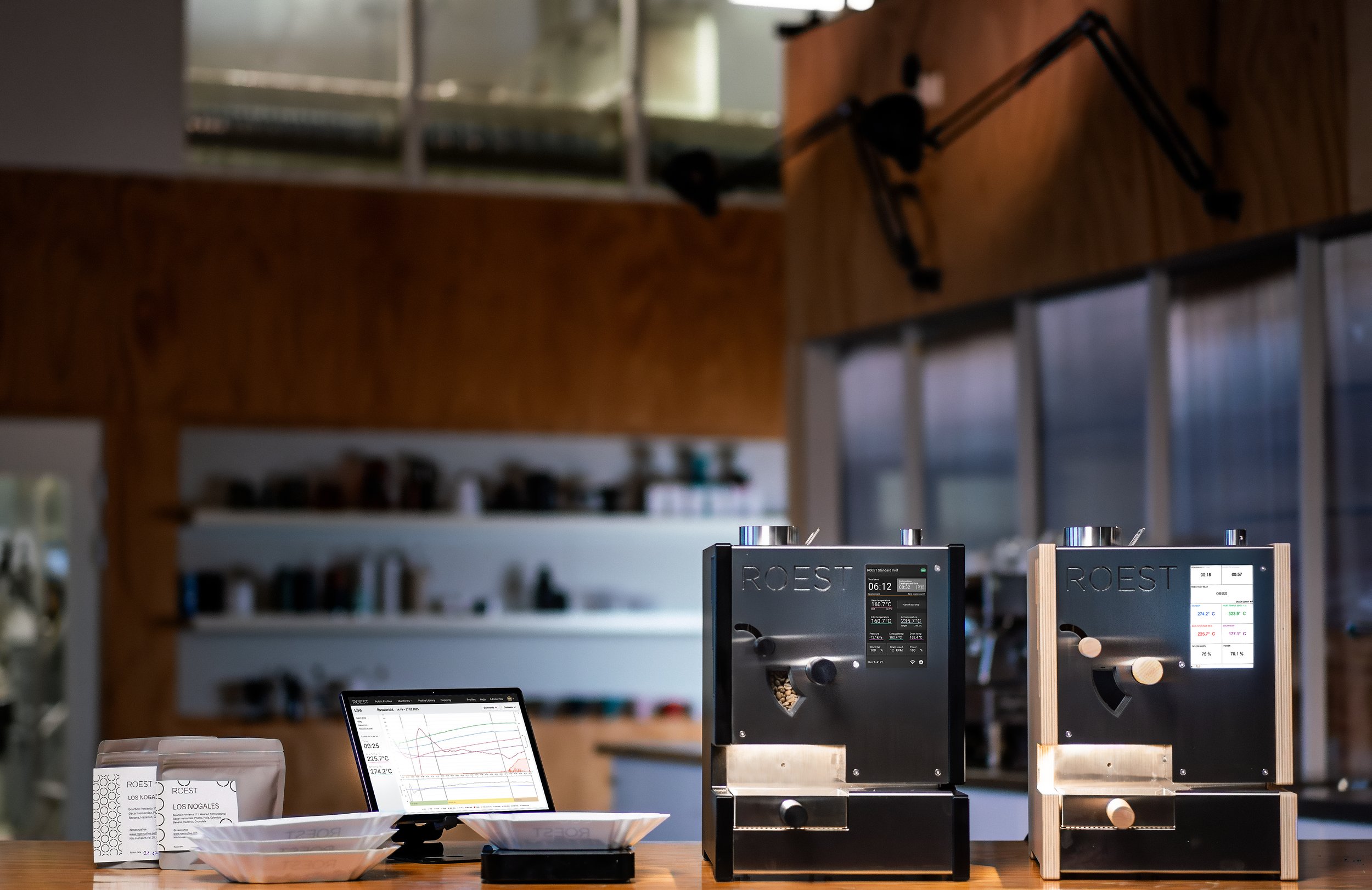
Learn about ROEST products, customers and more
ROEST BLOG
S200 & L200 Series: The New Generation of ROEST Sample Roasters
Discover the ROEST S200 & L200 Series—the new generation of ROEST coffee sample roasters with touchscreen control, counterflow mode, and ROEST Connect software for precision roasting.
ROEST P3000: The best coffee roaster for cafés, micro-roasteries, and specialty roasteries
Discover how the ROEST P3000 helps cafés, micro-roasteries, and specialty roasters scale production with precision and efficiency. A 3 kg air roaster that delivers up to 25 kg per hour with automated control, consistency, and energy efficiency for every roast.
Introducing Kurasu Official ROEST Reseller in Japan!
Kurasu joins the ROEST Reseller network, servicing Japan.
Why Cafe Imports Switched to ROEST for Sample Roasting
Café Imports, one of the world’s leading green coffee importers, now uses ROEST sample roasters in all their global labs. Discover why precision, consistency, and efficiency won them over.
From home roasting to building community: Denis Sabou
Meet Denis Sabou, passionate home roaster and active ROEST community member. Discover his roasting journey, philosophy, and key milestones with the ROEST sample roaster.
ROEST P3000 awarded Best New Product 2025 at SCA Expo Houston
ROEST P3000 wins Best New Product at SCA Expo Houston












